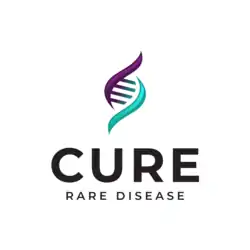Cure Rare Disease
Cure Rare Disease is a non-profit biotechnology company based in Boston, Massachusetts that is working to create individualized therapeutics using CRISPR technology to treat people impacted by rare diseases.
 | |
| Abbreviation | CRD |
|---|---|
| Formation | 2017 |
| Founder | Rich Horgan |
| Type | non-profit |
Region | United States |
| Website | cureraredisease |
History
Richard Horgan founded Terry's Foundation for Muscular Dystrophy in 2017, which became Cure Rare Disease in 2018, in order to develop a cure for Duchenne muscular dystrophy for his brother who has been battling the disease since childhood. Leveraging his network from Harvard Business School, Horgan formed a collaboration consisting of leading researchers and clinicians around the country to develop this cure for his brother, and eventually founded Cure Rare Disease.[1]
Horgan connected first with a scientist at Boston Children's Hospital, Dr. Timothy Yu, who had just successfully created a custom drug for a girl with the neurodegenerative condition, Batten disease using antisense oligonucleotide (ASO) technology. Horgan's brother's mutation is not amenable to ASO technology, so Horgan adopted the process and instead used CRISPR as the technology to attempt to cure his brother.[2]
Research
There are currently two drugs approved by the FDA for Duchenne muscular dystrophy to treat the patients with mutations on the dystrophin gene encompassing exon 51 and 53. However, people with DMD have mutations impacting different exons of the gene, so these do not work to treat all patients.
Cure Rare Disease is developing customized therapeutics using CRISPR gene-editing technology. To systemically deliver the therapeutic, CRISPR is inserted into the adeno-associated virus (AAV).[2] Customized to each patient, the drug developed for Rich's brother used a CRISPR transcriptional activator which functions to upregulate an alternative isoform of dystrophin. Because the CRISPR activation technology does not induce a double stranded cut, rather it acts to upregulate the target of interest, there is less risk of introducing an off-target genetic mutation.[2] Through the collaboration with Cure Rare Disease, researchers at Charles River Laboratories, headquartered in Wilmington, Massachusetts, have started to develop animal models with the same genetic mutation as the person to be treated with the drug so that therapeutic efficacy and safety can be shown.
Pending the success of this test, Cure Rare Disease will seek approval from the United States Food and Drug Administration to dose Terry with the first-in-human CRISPR transcriptional activator.[3]
Beyond the first patient, Cure Rare Disease has assembled patient families who work with the organization to fundraise and support the development of additional customized therapeutics targeting varying mutations causing muscular dystrophy and SCA3, a neurodegenerative condition.
Partners
The cross-functional collaboration includes researchers and clinicians from Yale Medical School, University of Massachusetts Medical School, Boston Children's Hospital, and the David Geffen School of Medicine at UCLA, Viralgen, Aldevron and Charles River Labs.
References
- "Inside the Nonprofit Aiming to Disrupt Big Pharma, One Case Study at a Time". www.bizjournals.com. Archived from the original on 2022-01-23. Retrieved 2020-09-18.
- "Custom CRISPR therapies could be closer than you think". Chemical & Engineering News. Retrieved 2020-09-18.
- kelsey-rogers (2020-06-15). "This founder is on a mission to use personalized therapeutics to save lives". Sponsored. Retrieved 2020-09-18.